23. Unconditionally and Irrevocably
When I wield the scythe that cuts the grain, the field feels like home.
“June, July, all through the warm months she hibernated like a winter animal who did not know spring had come and gone.”
by Truman Capote, from “Breakfast at Tiffany’s and Three Stories” (1958)
As always, the regularly recommended White Lily Society reading playlist full of instrumental, haunting piano ballads and spectral soundscapes is available here, but today’s theme warrants a grungier, darker playlist fit for a graveyard girl, or falling in love with a vampire— my magnum opus, if you will.
01/06/2025, London, UK
My dear,
The astrologer is staring me down. Somewhere on the cusp of Gemini, he thinks he can pin me down as largely Venusian. Slippery creature born of semiotics. Doesn’t he know the rules about pinning down the planets? Now the snails are encroaching on the house. Intentionally moving at the edges of my vision, climbing the hedges with singular precision. Bugs are everywhere, it seems. The heat doesn’t deter them like it does me. From the spider couple and their six babies nested in my windowsill, and the fat flies that buzz around my rooms, to the three moths that awaited me as I returned home, anxiously implying the existence of many more, that haven’t chosen to reveal themselves just yet. Perhaps a carnivorous plant is in my future. Or three.
Wrapped in hunting metaphors, and mountains, and a sense of pronoia. Every little ache is a sign, every word a poem unborn, every coincidence divine matter to be interpreted. Hand me the tools and I’ll start undoing the stitches. Sometimes the universe just wishes to be spoken to, to be recognised and acknowledged. The man at the fruit stand has taken to this idea, calling me his “darling'“ when I inevitably stop to inspect the blackberries for signs of rot. Symbolically potent, but a highly subjective form of divination. Moving on, nonetheless.

But first…
The time has come for another limited-time submission prompt! Please, help in alleviating my summer scaries, and submerge yourself in the full vampire girlfriend fantasy. Channel your best Elena Gilbert or Bella Swan impression and (mentally) join the White Lily Society in the town of Forks, Washington / Mystic Falls, Virginia, or any other place where it rains the vast majority of the year. Submit your most moody photographs, your cold-hearted poetry or journal pages, your thoughts about existence within small towns. Write about your relationship with vampires, whether metaphorical or not. Contemplate the walls of your room. Hold a ritual for the rain and document the results. Horror protagonists and final girls: this is your time to shine.
“About three things I was absolutely positive. First, Edward was a vampire. Second, there was a part of him-and I didn’t know how potent that part might be-that thirsted for my blood. And third, I was unconditionally and irrevocably in love with him.”
by Stephenie Meyer, from “Twilight” (2005)
Wonder about what makes the vampire boyfriend so attractive, or why girls daydream about being the vampire girlfriend. Analyse the intertwined symbolism of Buffy and Faith. Ask what kind of a currency youth really is. Find out what the consequences are of all the teen drama’s we were force-fed in the 2010s— what did it mean to grow up idolising the likes of Aria Montgomery or Katherine Pierce? How has the vampire boyfriend / girlfriend evolved and changed with the decades? What does it signify that digicams, cd players, and vinyl records are enjoying a major renaissance?
Rewatch, research, put a blue filter over your thoughts, and then submit the result. All and any forms of work are most welcome and most wanted. Submissions for this specific prompt close on June 30th1, so be sure to submit before that date. As always, you can find our full submission guide here.
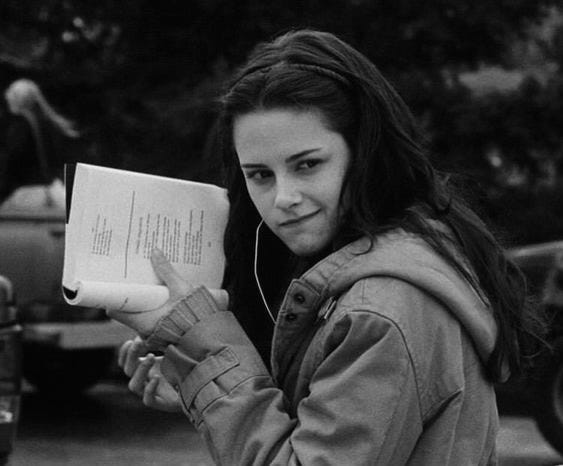
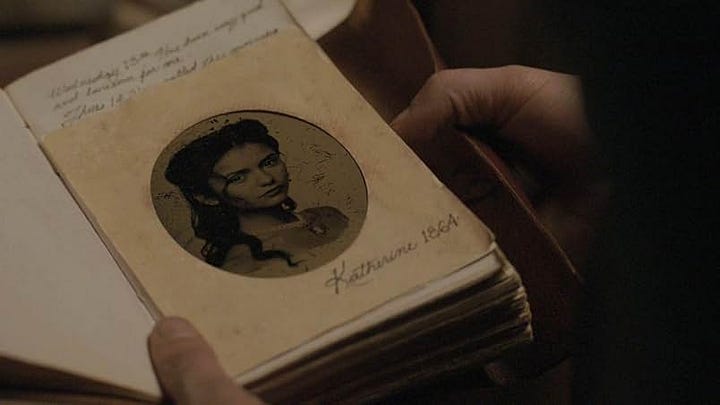
And if I may redirect your attention just a bit more before getting to the topic of this month’s letter, another poem of mine entitled “Recession Indicator” just went up on the Substack this past month, all about my experience in the art and literature world as someone who, technically, holds a business degree. Well, fine, a fashion business degree. But still. My point stands, my dear.
As you might have guessed, this letter is all about the vampire girlfriend. No, not a girlfriend who is a vampire, enticing as that seems, but the girlfriend of a vampire, all awkward chuckles and short smiles, absent-minded hand through tussled hair. To be human, personified. It stands to supplement my previous “Byronic hedonism” lifestyle guide, expanding on it in a way that is distinctly cosier, gloomier, and focused on alleviating the pain of summer for all my fellow heat-haters in arms. Colder weather is still outside of arm’s reach, so we must craft a way to survive in the meanwhile.
Now, hold on tight, spider monkey, and let’s dig in…
This newsletter contains the following sections:
I. Archive Sources // II. the Vampire Girlfriend’s Guide to Life, and Surviving the Summer // III. In My Restless Dreams: Life, Lately // “On the List” June // Outro
I. Archive Sources
“The house is a metaphor for the subconscious mind. When a vampire is invited into one’s house, it is symbolically invoked into one’s personal subconscious, where it is then free to feed upon one’s spiritual vitality”
by Laura Sarnelli, from “Ghostly Femininities: Christabel, Carmilla, and Mulholland Drive” (2008)
Personally, I needed very little persuasion to read more about today’s topic, my beloved vampire media. I grew up with them, these tragic romances, vampire girlfriends, and teen melodrama’s. They were the bread and butter of my definitive years. But it is always a joy to further feed one’s curiosity— even if you’re already in possession of some freakishly encyclopaedic knowledge of it. So, with very little pretence, I have curated some selected readings on all things “Twilight” (2008) and “the Vampire Diaries” (2010-2017), focusing specifically on the romance aspect, and its dynamics of gender, subversive as they can be.
Just a little something to sink your teeth in, my dear.
“My Vampire Boyfriend: Postfeminism, "Perfect" Masculinity, and the Contemporary Appeal of Paranormal Romance - link
I would be truly remiss if I let this prime opportunity pass me by, and failed to re-insert one of my favourite papers of all time. There’s much to be said about vampires, and vampire romance, just on the topic of gender roles alone. Whenever a vampire romance is hailed as perverse because of the age difference, this paper has been my go-to referral, because it somewhat argues that the vampire romance actually facilitates and expects a certain cognitive dissonance in the viewer when it comes to the age factor: the vampire’s inflated age is not meant to be taken literally, and is rather a stand-in for creating a male character who is youthful in appearance, but mature in attitude, restraint, and accomplishment. The romance symbolically supports a much smaller age gap than it purports to2.
“Vampire boyfriends are complex instantiations of every positive aspect of masculine privilege, without personifying those more threatening facets of hyper-masculinity — the violence or the uncontrolled sexuality. The great popularity of this genre suggests that many female readers are seeking certainty and protection and to maximize their options as women without curtailing feminine pleasures, a desire that is definitely worth acknowledging and addressing.”
“‘You Were Such a Good Girl When You Were Human’ - Gender and Subversion in The Vampire Diaries - link (available within bundle)
Though not treading particularly revolutionary ground, this paper is a fun look at the moulds of femininity some of the different Vampire Diaries girls subscribe to, from Caroline, to Elena and her infamous doppelgänger Katherine. The points the paper makes about Caroline’s arc throughout the show— her growth from the shunned “try hard” human girl, to a fully fledged, more mature and confident vampire, are familiar ground, but well put. True, there are a lot of double standards in TVD and other “teen drama’s” like it, but there are minor points to be awarded for how [female] sexuality is treated within the show, especially when juxtaposed with the Mormon-influenced narrative of “Twilight” (2005): Bella actively desires but is denied that part of herself by the plot and by her vampire suitor, Edward, until she has properly “earned” it. By contrast, most of the main girls from TVD are implied to not be virgins at the very start of the show, and sexuality is a natural extension of their life that is rarely questioned.
“[Caroline’s] response [to Tyler’s unfair remarks about her sleeping with Klaus] represents a marked progression in the way the show treats female sexuality. In the first season, Caroline's libido is seen as a source of embarrassment and/or a reason to dismiss her as a worthwhile person, but in the aforementioned scene, she is asserting her absolute right to make decisions about her own body and her own sexuality and demanding that her autonomy be respected. She is no longer willing to be treated as a pawn or a joke, or as someone whose sexuality exists to please others.”
“Sleeping with a Vampire: Empowerment, submission, and female desire in contemporary vampire fiction” - link
The idea of a skewed power dynamic is often consider central to the vampire story: the older, more mature vampire, and the young, comparably fragile girl. This paper talks about a number of different facets of this issue, suggesting that shows like “True Blood” (2008-2014), and “the Vampire Diaries” (2009-2017), as well as “Twilight” (2008), actually do take significant steps to further a sort of equality principle. In theory, the vampire’s powers are meant to subjugate, but in practice, they are rarely, if ever, used for this purpose in the main love story— both Bella and Sookie are exempt from vampire “glamours” and other powers (like Edward’s mind reading). Bella and Elena eventually level the metaphorical playing field by becoming vampires. And TVD takes great care to establish the sanctity of human Elena’s free will, through vervain and restraint equally. On another note, I particularly enjoyed this paper’s slightly humorous suggestion of TVD’s Damon as damsel-in-distress, over Elena— something to eagerly look out for on a future rewatch.
““The love triangle” presupposes that no man can fulfill all the needs of a woman and this presumption persistently dismantles male possessiveness and demands of exclusivity. At the same time, it undermines the traditional identification of female love with unlimited devotion and submissiveness. This is what Katherine says to Elena when she catches her kissing Damon: “It’s okay to love them both. I did””
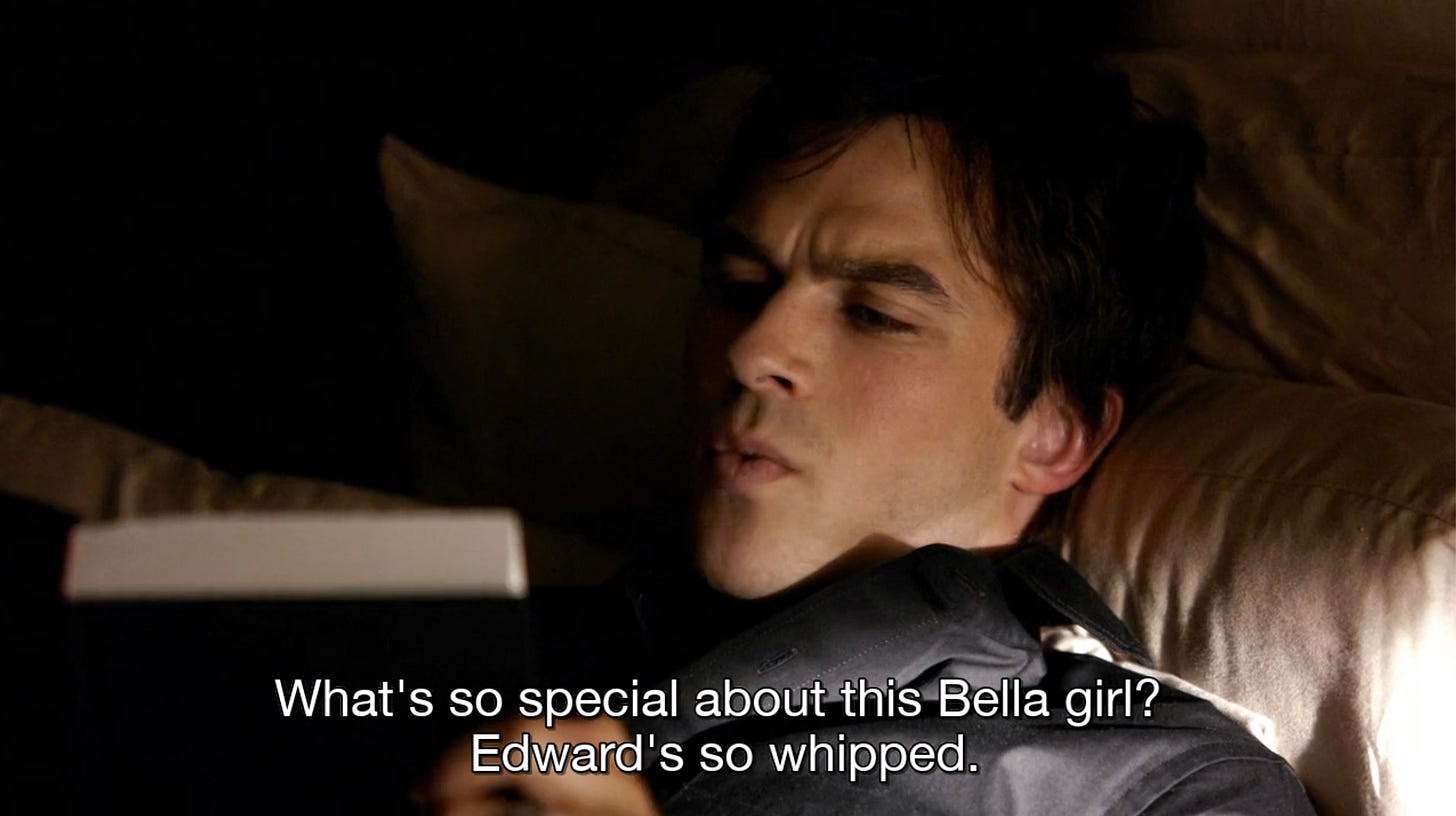
II. the Vampire Girlfriend’s Guide to Life, and Surviving the Summer
“But I do feel strange-almost unearthly. I'll never get used to being alive. It's a mystery. Always startled to find I've survived.”
by John Steinbeck, from “Journal of a Novel: The East of Eden Letters” (1969)
Growing up when I did in the 2010s, there was a most definite plethora of supernatural shows to attach oneself to, and they were inescapable. My teenage years were dominated by “the Vampire Diaries” (2009-2017), the “Twilight” saga (2008-2012), and CW-style teen drama’s like “Pretty Little Liars” (2010-2017). Not to mention my late discovery of “Buffy the Vampire Slayer” (1997-2003) in university. As a result, my expectations of life revolved around foggy days, cemeteries, weekly sleepovers, eternal autumn, and of course, a vampire boyfriend to match. Oh, the horrors of growing up and discovering this promised life of gloom and melodrama to be all fiction! To say I was crushed would be the understatement of the century. I never really stopped mourning that life, reaching into daydreams to re-capture it.
It certainly doesn’t help that I have naturally come to abhor the warmer half of the year. As a small-town teen, I hated the summer for the performative aesthetics and socialisation— this was an era where the picture perfect summer bucket list was a non-negotiable, after all. Now, having grown into myself, I hate summer for the way the heat makes me feel. Being in the sunlight is tiring, it makes me despair easily. Often it leaves me feeling inches away from swooning dramatically. And I loathe sweating. Don’t even get me started, my dear. Summer fashion is simple, and largely uninspiring. The brick homes I know (and mostly love) are always just as warm as the outside air, if not hotter. Summer is inescapable dread, if you will forgive my impending doom. The daydream becomes much, much more urgent during it.
So, this guide is meant to be a bit of a bit of escapism. Micro-dosed daydreaming, if you will. To survive the summer, or life at large, the best strategy in my personal arsenal is to unabashedly channel the “vampire girlfriend”. Inspirations include Elena Gilbert from “the Vampire Diaries” (2010-2017) and Bella Swan from “Twilight” (2008), but also, to a certain extent, the aesthetic of shows like “Buffy the Vampire Slayer” (1997-2003), the “horror video game protagonist” / “final girl” aesthetic, as well as characters like Aria Montgomery from “Pretty Little Liars” (2010-2017). Picture: the sweet and sullen girl, a town of eternal rainfall, locket necklaces with images of [vampiric] lovers within, chai lattes, and everlasting yearning. That is what we’re emulating here.
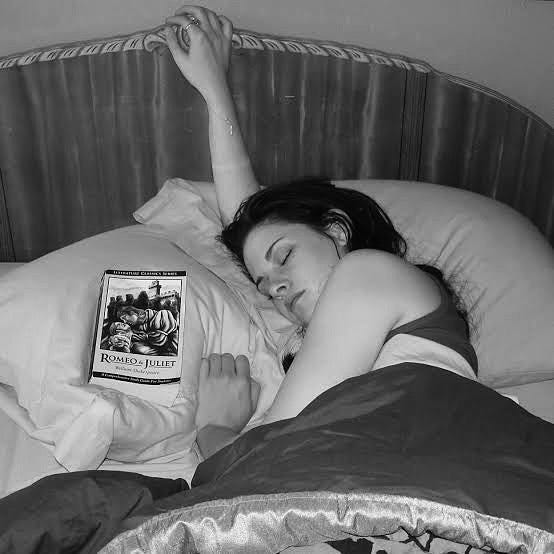

II.I You know, girly stuff.
“TEMPTATION OF IDLENESS (by far the strongest).
Never surrender to the flow of time. Never put off what you have decided to do.”
To structure this loose guide, I’ll be making use of Simone Weil’s “List of temptations (to be read every morning)” (from “First and Last Notebooks”, ca. 1970), starting with the temptation of idleness and making my way down as we sink deeper into our yearning melancholy. Just a little bit of something to underpin all the madness.
So, idleness, that specific brand of languid summer daze, of immobility, is all things considered, a rare trap. More people are invigorated by the expanse of warmth and time than not. Congratulations, my dear! If you are the latter, rather than the former, you’re the intended target audience of this guide. But to feel fulfilled and inspired, it is essential to fight the lull of the season. Keeping busy is not always an act of harmful escapism; sometimes it is running towards something, not from something, that matters most. There are a myriad of ways to wield a daydream and make it fruitful to you. As Annie Dillard wrote, how you life your days is how you spend your life. If one of the components of said life does not suit you, you can rewrite them, always & forever.
Personally, I feel my best when I curate the daydream of my existence, the fantasy of it. Truthfully, I am not in the business of peddling reality: I deal in desire and hunger and creation. When I wield the scythe that cuts the grain, the field feels like home. The world isn’t made for any of us so we must make the world. “It is too easy to lose the threads of beauty. It is part of the modern illness of disconnection, and beauty is the cure.” (by Phoenix LeFae, from “Walking in Beauty”, 2020). Some would call that disconnect alienation. Regardless, the cure for a largely hostile reality is to be the playwright, the set decorator, the head of the costume department, the prop master, and the editor. With intent and sacrifice, you can very well mould the parts of you that are within your control.
Which is exactly why “The art of seduction” (2001) dedicates an entire section to the curated creation of fantasy; how to “poeticize your presence”. “[…] in a world that is harsh and full of disappointment, it is a great pleasure to be able to fantasize […].” And though the book speaks of providing a fantasy for one outside of oneself, there is no reason not to apply the same principles to yourself. To seduce yourself. There is great value to be ascribed to the practice of beautifying one’s external circumstances, to match the inner ones. A harmony such as that creates a feedback-loop strong enough to reinforce identity and fuel inspiration at the same time. A self-sustaining process that, within beauty, creates more beauty, and so on.
But the temptation is one of idleness, and it is strong. The pain of change is easily negotiated, after all. And with the summer heat, the glare of sloth could almost distract from its sinful nature. If the season proves bothersome, above all, do not meekly wallow in your fate. No self-respecting vampire girlfriend sits around feeling miserable for too long. Sure, Bella has her little depression arc, but she ultimately recognises that she alone can crawl her way out of it… with the help of Jacob. Elena, too, chooses wisely in distracting herself from her sorrows— at least in her human state, that is. Convenient, because most of us do not have a neat “humanity” on/off switch in our brains for when the living gets hard. We simply have to go through it.
II.II Dear Diary
“Temptation of the inner life.
Deal only with those difficulties which actually confront you. Allow yourself only those feelings which are actually called upon for effective use or else are required by thought for the sake of inspiration. Cut away ruthlessly everything that is imaginary in your feelings.
Temptation to dominate. / Temptation of perversity.
Never react to an evil in such a way as to augment it.”
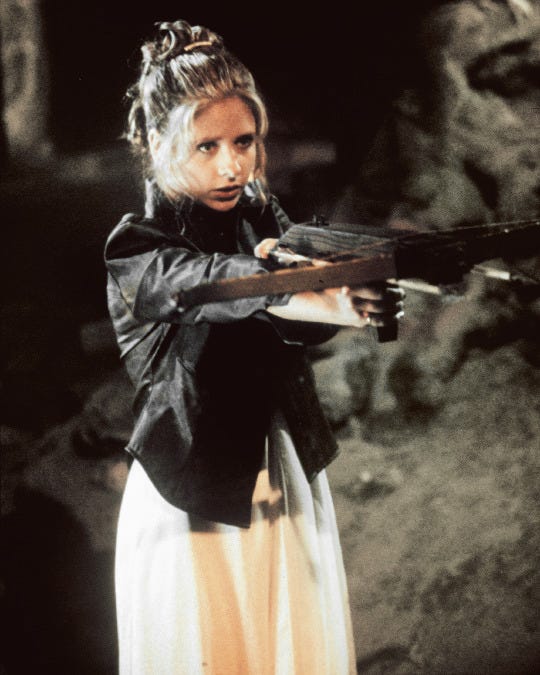
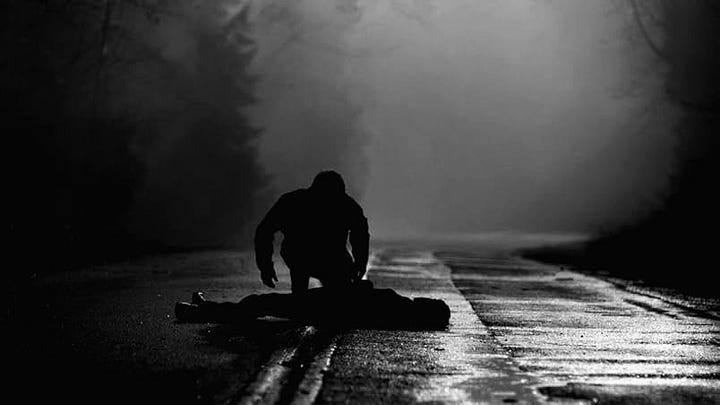
The vampire girlfriend quite ubiquitously lives within her own head. She is plagued by a dreamy, escapist nature. The proto-“thought daughter”, if you will, She feels alone in a crowded room, she reads like her life depends on it, and her day to day is most often characterised by a deep love of being alone. Bella tells her dad Charlie that she “[doesn’t] really mind being alone”, and “the Vampire Diaries” (2010-2017) made a recurring motif of its main character’s extensive solitary journaling habit. So create space for some reflection at the beginning and/or end of each day. A little bit of time to process both everything that happened, and how you feel about it. The journal is a sanctuary of your own shaping— it could be filled with whatever fancy or fantasy you desire. It needn’t be a place solely set aside for solemn contemplation.
“Dear Diary, today will be different, it has to be, I will smile and it will be believable. A smile that will say ‘I am fine, thank you... Yes I feel much better.’ […] I will start fresh, be someone new. It's the only way I can make it through.”
spoken by Elena Gilbert in the pilot episode of “the Vampire Diaries” (2010-2017)
A deep love for introspection and solitude is only one part of the puzzle. What matters most is the leave the vampire girlfriend takes to feel her emotions as deeply as she wants. She doesn’t ever invalidate them. The plot often characterises her as deeply empathetic, gracious, and kind. Standing in strong contrast to the traditional cold-blooded vampire, she is the embodiment of the human spirit for forgiveness and considerateness. Despite the vulnerability this grants her within the plot, priming her to be the victim of misfortune, she never gives up her selfless nature. Most of all, melancholy is an accepted state of mind: everything has its season. So when it rains, light a candle, and curl up with a book, or your journals. Make the most of the grey days, or even go out to enjoy the sun when the madness to do so strikes you. A fortune cookie once told me that “It’s better to light a candle than to complain about darkness”.
It goes without saying that reading is another major, recommended distraction. Submerge yourself in any dramatic classics, especially ones that feature heavy rainfall, tragic romance, or vampires. Some of the moody, Romantic books Bella mentions throughout the “Twilight” saga include “Wuthering Heights” (1847), “Pride and Prejudice” (1813), “Jane Eyre” (1847), and “Romeo and Juliet” (1597): anything Austen or Brontë, as well as selected works of Shakespeare. Vampire stories are, of course, more than welcome, so add “Carmilla” (1872), “Dracula” (1897), and Anne Rice’s “Interview With the Vampire” (1976) to your shelf if they’re not there already. Just as long as you don’t let your vampire boyfriend catch you reading them, that is.
“Solitude produces originality, bold & astonishing beauty, poetry. But solitude also produces perverseness, the disproportionate, the absurd, and the forbidden.”
by Thomas Mann, from “Death in Venice” (1911)
Scenes depicting the vampire girlfriend in her room are plentiful, and essential to the character. The bedroom is a sanctuary, and cocooning is a full-time occupation. My friend tilda has written a gorgeous piece about the bedroom and its role in identity formation / reinforcement, which describes this idea far better than I could. Essentially, the bedroom is the ultimate safe space, the living scrapbook. It is a retreat into the deepest facets of the vampire girlfriend’s psyche. Sometimes it hosts a group of friends for sleepovers or gossip sessions, splayed out with pillows on the bed, on the floor— but more frequently it is a temple of solitude, where, as Tilda writes, “Very often the activity is the inhabiting itself”, which is a form of “self-regulation”. Books and pictures and warm lighting strewn about, it should be a place of comfort most personal to you. Maybe not all the furniture is yours, but the overall composition of the room ends up being so gut-wrenchingly attached to you that it would suit no other long term inhabitants.
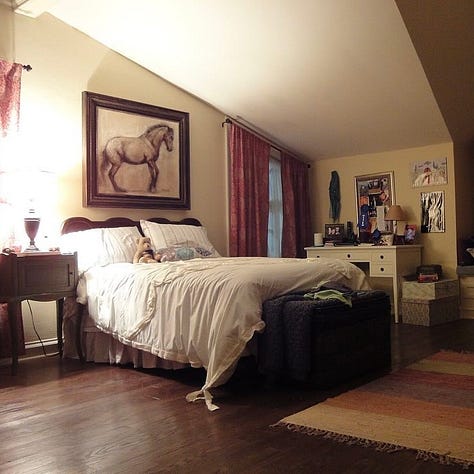

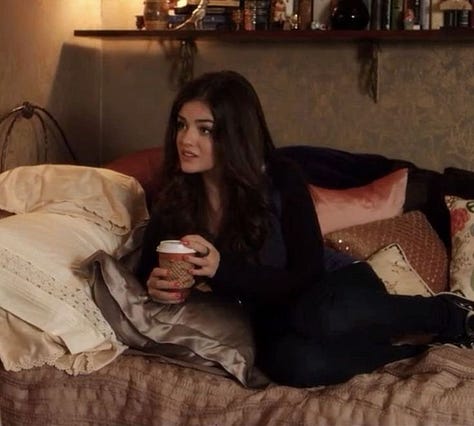
As an extension of this comfort-first philosophy, physical media is your best friend. There is nothing paradoxically cozier than single-purpose technology. Forget your phone and separate it into an mp3 player, a physical flashlight, a digicam, and a camcorder. Carry a notebook with you. In the comfort of your home, relish in arcane artefacts like a turntable, cd player, or dvd player. Even cassettes are welcomed. The act of pressing play becomes more meaningful when it is not a part of the daily tedium, but an intentional act. Limited choice often breeds contentment. Wired headphones never went out of fashion, they just went out of sight. And they’re very beloved to the vampire girlfriend, my dear.
Another way to spend your cozy nights alone is by dabbling in the supernatural. Research is a big part of the vampire girlfriend aesthetic, most often in social settings, but also in the sanctity of your room. Think of the research montage in “Twilight”, and let curiosity nurse you. Mindless consumption of media is decidedly not approved. Comfort watches are, of course, a slight alteration to this rule, but that is because your eight rewatch of “the Vampire Diaries” (2010-2017) arguably fulfils an emotional need, and thus, will be excused.
Mood-movies and shows for the vampire girlfriend include “Twilight” (2008, “New Moon”, 2009, is also allowed), “Sleepy Hollow” (1999), “Nosferatu” (2024), “Jane Eyre” (2011), “the Innocents” (1961), “the Moth Diaries” (2011), “Bram Stoker’s Dracula” (1992), “Wuthering Heights” (1939), “Scream” (1992), “Frankenstein” (1931), “Ginger Snaps” (2000), “Before I Fall” (2017), “the VVitch” (2015), “the Craft” (1996), “Practical Magic”, (1998), “Crimson Peak” (2015), “Jennifer’s Body” (2009), and “Coraline” (2009). As for tv shows, there’s the obvious choices, like “the Vampire Diaries” (2010-2017, seasons 1-3 are most atmospheric), and “Buffy the Vampire Slayer” (1997-2003), but other cozy options include “Pretty Little Liars” (2010-2017, early seasons preferred), “Gilmore Girls” (2000-2007), and “Gossip Girl” (2007-2012).

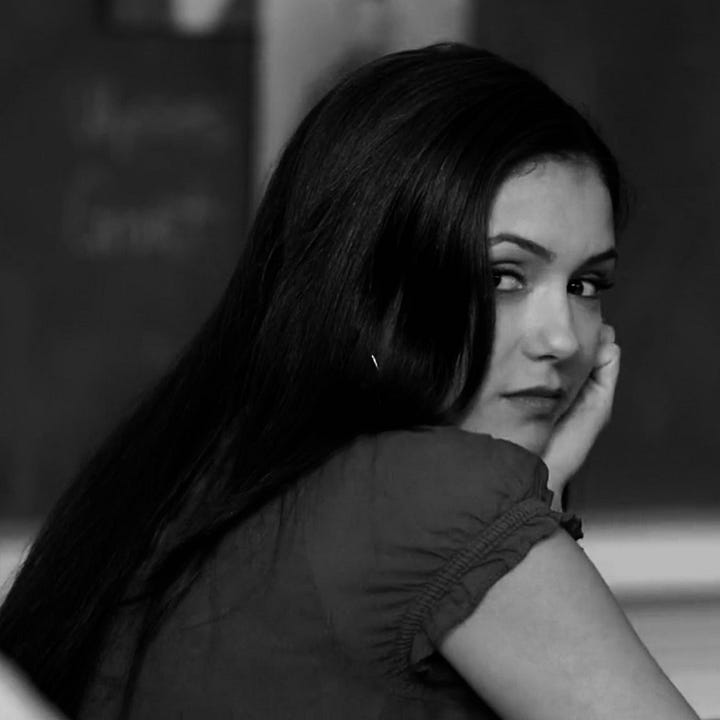
To return to the inner world of the vampire girlfriend, it could be argued that Bella and Elena, and by extension Buffy, Caroline Forbes (also from TVD3), and Aria, are all marked by desire. They all yearn and ache to grow into themselves, to find a life that fulfils them, or to find a great love. One that consumes them. The ways in which they negotiate and navigate their role within their respective plots is completely driven by this explorative desire, and they are fully fledged within that role, which is part of what makes them so compelling, yet easy to inhabit. So let desire drive you, and try on different facets of yourself for fun. Construct the daydream as you like.
In pop culture, the vampire girlfriend attitude is very much regarded as performative, “not like other girls”, but her characterisation actually fits a broad spectrum of feminine archetypes. There’s Caroline, who is the traditional people-pleasing popular girl before her change into a vampire, after which she centres her own experience more. Buffy very much wants to be more popular, but is too busy saving the world as the Slayer to do much socialising. At the start of the show, Elena is coming to terms with her loss of popularity and identity after tragedy. And Bella very much yearns to be invisible and retreat inside herself, but her status as the “new girl” means she is popular despite her wishes.
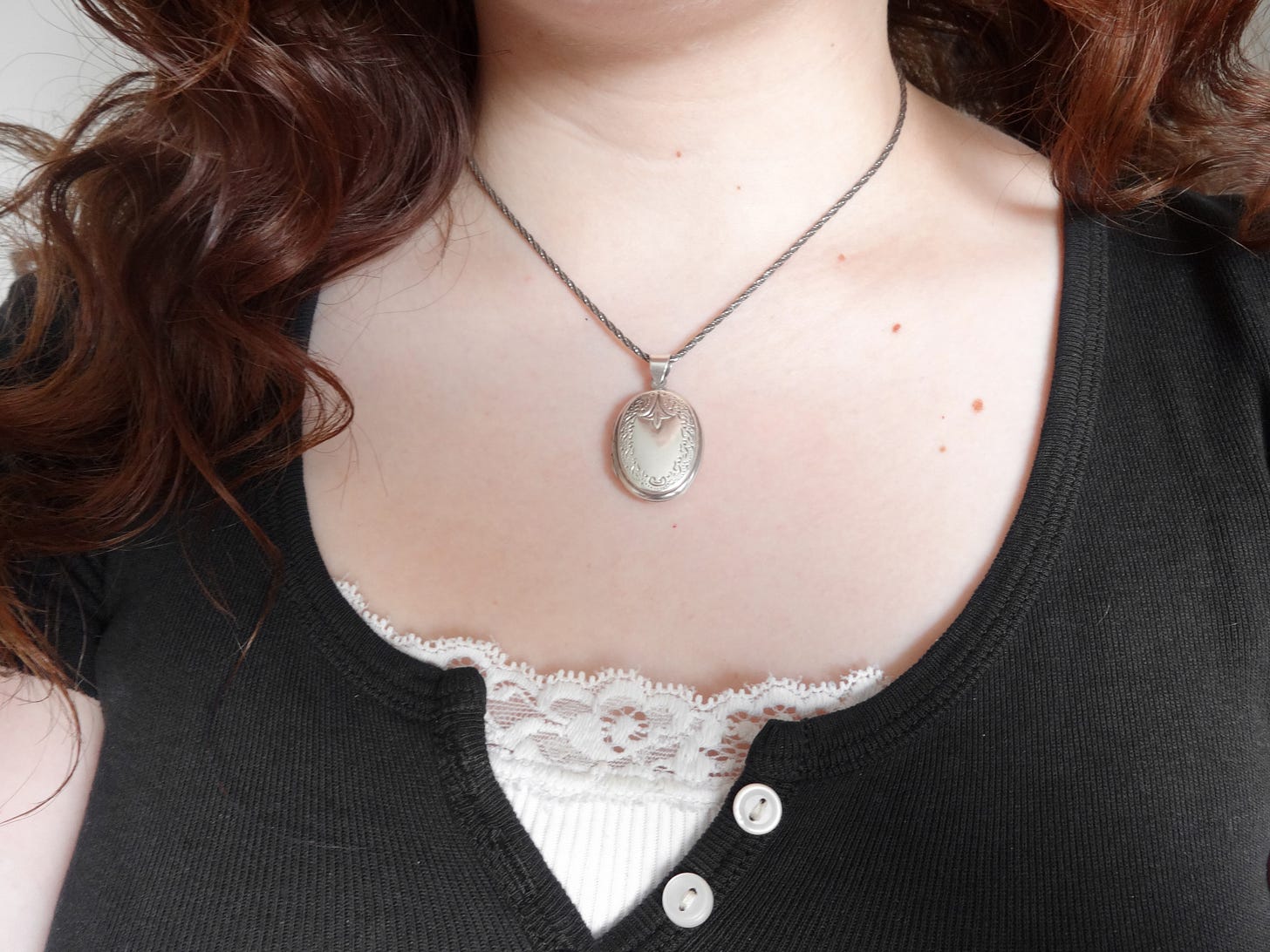
As a result, the fashion is also very varied. You won’t find either Bella or Elena looking like an outright slob, but comfort is most definitely their main priority. Henley tops, layered with camisoles, and bootcut jeans are all favourites, but the style can vary on its more feminine aspects. Bella famously begins dressing softer throughout the “Twilight” saga: “When [Bella] falls in love with Edward, and merges with the Cullen world, her palette goes to more cool colours; her clothes become a little softer and romantic, less tomboy.” (from “Twilight: the Complete Illustrated Movie Companion”, 2008). Elena, for her part, keeps a specific look, incorporating Vans, simple silhouettes, jean jackets, minimal jewellery, and the occasional denim skirt. Details are kept quite clean, not necessarily romantic, though the signature layered lace tank top with henley overtop does feel very delicate. I’d argue Bonnie Bennet (TVD) actually gets overlooked a lot, but her early season looks are a great reference point for a more romantic, feminine version of the style. This is also where I’d like to bring up Aria again, because her self-described “bohemian hipster-girl” style feels like a natural extension to this philosophy, incorporating darker colours, “edgier” styles, and exponentially more pairs of lace-up boots.

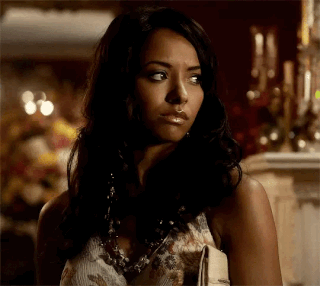
II.III Buffy will patrol tonight
“Temptation of self-immolation.
Subordinate to external affairs and people everything that is subjective, but never the subject itself-i.e. your judgement.
Never promise and never give to another more than you would demand from yourself if you were he.”
Going outside, is unfortunately, not entirely avoidable, nor should you want to avoid it point blank. The dreaded outside may be inevitable, but invigorating for the soul— don’t discount it entirely, my dear. High noon is potentially the worst time to put this to the test, and though you may not burn to dust or sparkle like your vampire boyfriend, the sun might as well be deadly to one so delicate. Pick and choose your excursions wisely. Early mornings are the best time to catch fog and grey skies, but dusk or evenings are atmospheric as well, and typically much colder. Parks, forests, and cemeteries are all perfect options for a day out— a patrol, if you will. Wooden stakes optional, but very much recommended. The Victorians treated cemeteries akin to parks, choosing to go for strolls or picnics amidst the headstones. There are still some modern cemeteries that allow the same, provided you do not disturb the (un)dead excessively.
Physical fitness is a must, but only for fighting off vampires, Buffy style. Being caught off guard is the difference between life or death for the Slayer, after all. You could patrol (go for a walk), inspect nearby vampire nests (parks and cemeteries), or train for your next hunt (go for a run). In the sanctity of your room, you could explore simple daily stretches, or yoga. Rejuvenating practices that keep the physical age difference between you and your vampire boyfriend at bay. A diet of bed-rotting alone is unsustainable without the occasional foray into the forest, my dear.

We’ve spoken about the solitude of the vampire girlfriend, but unlike Bella, both Elena, Buffy, and Aria are characterised by an extensive, well-developed social life with a tight-knit group of friends. Sleepovers, homework sessions, morning coffee, movie nights (w/ impromptu seances), and especially research are all core parts of their day-to-day routine. Though the homework might defer to research, in the face of all those world-ending threats and monsters of the week. As Buffy says: “It’s hard to do homework if you think you’re about to die” (S07E04).
Research in “the Vampire Diaries” (2010-2017) or “Buffy the Vampire Slayer” (1997-2003) is never a solo activity: it always consists of a group of friends, sprawled out on sofas and in wood-clad libraries, with at least seven books open, a tray of baked treats, and maybe even some sort of a whiteboard. In “Buffy”, the treat of choice is a tray of donuts, with jellies for Giles, while in TVD, you might get away trading the treats for a liquid one: a crystal glass of bourbon, enjoyed by the fire. The Sunnydale High library is practically a second home for the main characters in Buffy, with all the comforts to match, but if that spot is taken, they have no qualms with a little patrol/research combination, as seen in S03E06. After all, Buffy herself describes the role of the Slayer as “she who hangs out a lot in cemeteries” (S04E11).
Above: clip from “Buffy the Vampire Slayer” (1997-2003), S03E06 “Band Candy” in which Buffy combines SAT prep and a bit of slaying in the cemetery. Original Image Source: see show. Clip cut, and filtered B&W.
Huddled over stacks of books, candles lit, the Scoobies (BtVS), the Liars (PLL), and the Salvatore group (TVD) all use research and knowledge as a touchpoint for group bonding. Unlike solitary Bella and her laptop, the results they acquire in fighting the forces of evil, or anonymous texts, are a dual effect of both their hard work, and that community aspect they infuse it with. So take a page out of their playbook, my dear, and simply have friends over to read, or work in each other’s presence. Sprawled out on the sofa with an ever-rotating selection of books, hot drinks, and good company, there is very little that can manage to be truly daunting.
Supernatural evils not included, of course.
III. In My Restless Dreams: Life, Lately
“Fall in love and stay in love. Explode. Don't intellectualize. Get passionate about ideas. Cram your head full of images. Stay in the library. Stay off the internet and all that crap. Read all the great books. Read all the great poetry. See all the great films. Fill your life with metaphors. And then explode.”
by Ray Bradbury, from “Conversations with Ray Bradbury” (2004)
As always, this newsletter exists in part to be a diary of sorts, sealed with a kiss and sent out into the world. It’s an odd thing, this blend of personal, and occasionally academic, but it works. Partially because I just adore running back to you and telling you about my past month, my dear. May for me was about devotion, yes, but it was also about solitude, and softness. Finding a way to deal with eldritch horror that is the summer season. It gets harder and harder every year, in truth. Which is why I needed a little bit of an escape. Away from the bricks and concrete of London, beloved as they are to me, and into the Swiss Alps…
III.I Haunted in the Alps - Vol. 2
“What goes too long unchanged destroys itself. The forest is forever because it dies and dies and so lives.”
by Ursula K. Le Guin, from “Tales from Earthsea” (2001)
☆ All images in this small section were shot on my new Sony Cybershot DSC-WX80 (16.2mp)
Last year, around a similar time, I retreated into the heights of the Swiss Alps to visit my oldest friend, who lives there, tucked away into the luscious woods and meadows. Something about the solitude, the mountains, and the slower pace was, cliché as it sounds, quite invigorating, and I fell in love with the complete turnover in my usual rhythm. Yes, my dear, even the biggest city enthusiasts need a break from time to time. Even if just to return and fall in love with the Big Smoke all over again. Absence does make the heart grow fonder, after all.
And so I ventured into the mountains once more, taking a bus up the hairpin roads as the smothering fog I saw upon landing just continually grew denser and denser. By the time I arrived in the small town my friend calls home, it was so thick you could barely see the end of the street. And it stayed mostly the same for much of the trip. The weather was absolutely fantastic; gloomy and spirited, with cold grey days, and an endless expanse of dense fog. So dense, in fact, that the mountains were properly hidden from view. One could even forgive themselves for forgetting they existed, for making the mistake of thinking that the cloche of clouds was all there is. Like a little garden of Eden, shrouded and hidden from view. When I was little, my mom explained the fog to me as “the clouds coming down to see how we are doing”. And in the mountains, they were amicable and soft, protective even.
I spent my days reading about divination, curled up by the fire, watching “Yellowjackets” (2021-), or listening to the “Twilight” (2008) soundtrack, of course. If you’ve been paying attention to the rest of this letter you would know that this type of weather is my absolute dream. But it was also, at times, a force to be reckoned with in its own way. One cold night, I slept with my window cracked open only an inch. Enough to fell me for the remainder of the week, and give me some sort of a nasally cold that required big wool sweaters to be put on over my white dresses. But worry not, because my dear friend immediately went to consult her many books, and promptly made me a plethora of herbal remedies to ingest of variable palatability: garlic/lemon/ginger shots (wouldn’t recommend), a decoction of dried elderberry and echinacea (bitter but bearable). Not to mention an endless stream of rosemary and thyme tea, with plentiful honey (divine).
In between bouts of my desolate illness, I had a grand time just wandering the fields and taking in all of the gloom. In fact, I am convinced that this weather is the closest thing to a heaven I could imagine. And in a town so small, there is little to do but be alone with one’s thoughts, read, and write. I went a little bit insane, counting slugs and inhaling amber incense smoke, but it was all worth it for the sense of peace that washed over me with every rain-shower. That little bit of a daydream realised as I got to uninterruptedly live out all my vampire girlfriend fantasies, and my horror protagonist ones too. Roaming the creaking house with a flashlight, soft steps on antique carpet, looking out into the darkness of night. And there, just beyond where the fog reached, was a piece of me I was glad to be reunited with. A piece I’ll desperately need for the warmer months ahead.
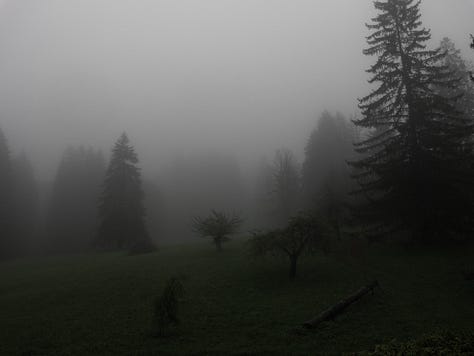
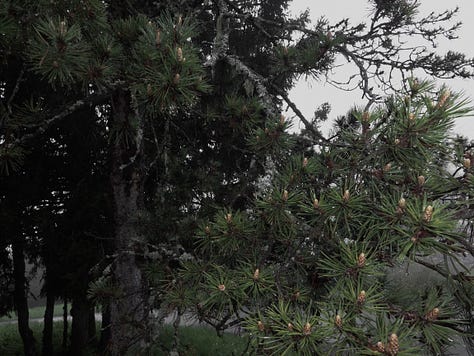


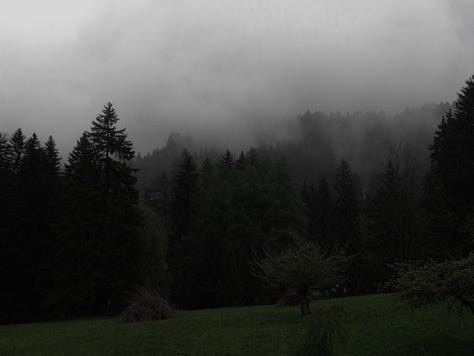
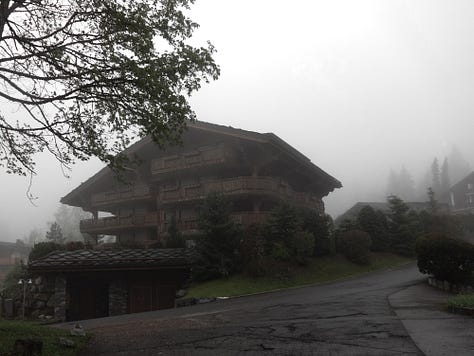
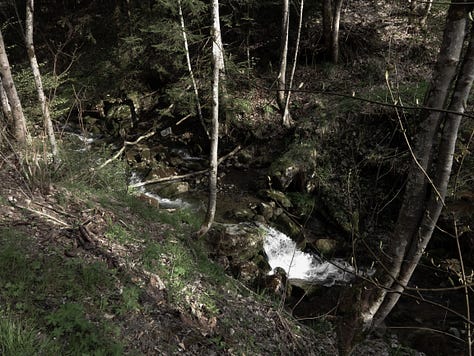
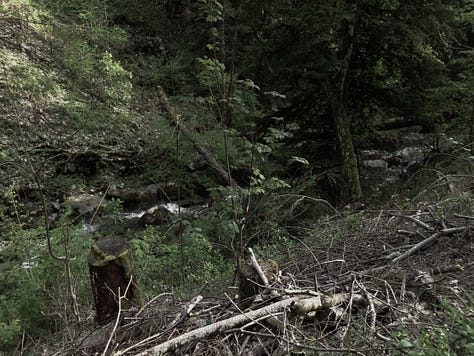

III.II Other Oddities.
“I must always have things around me that I find beautiful and sacred - organ music and mystery, symbol and myth. I need those and cannot renounce them. That is my weakness.”
by Herman Hesse (translated by W. J. Strachan), from “Demian” (1919)
I do, also, always like to report back on some of the outings I go on that I first recommended in the “On the List” section of the newsletter; a little bit of feedback on why you should trust my recommendations going forward (!). The first item on today’s agenda is the “Spectres and the Supernatural: Victorian Spirit Photography” curator’s talk at the V&A, all about Victorian spirit photography. It was a lovely way to pass an hour or so in the afternoon, up in the attic of the museum with an array of ghostly images laid out for my amusement. Not to mention the page or two of notes haunting my notebook afterwards.
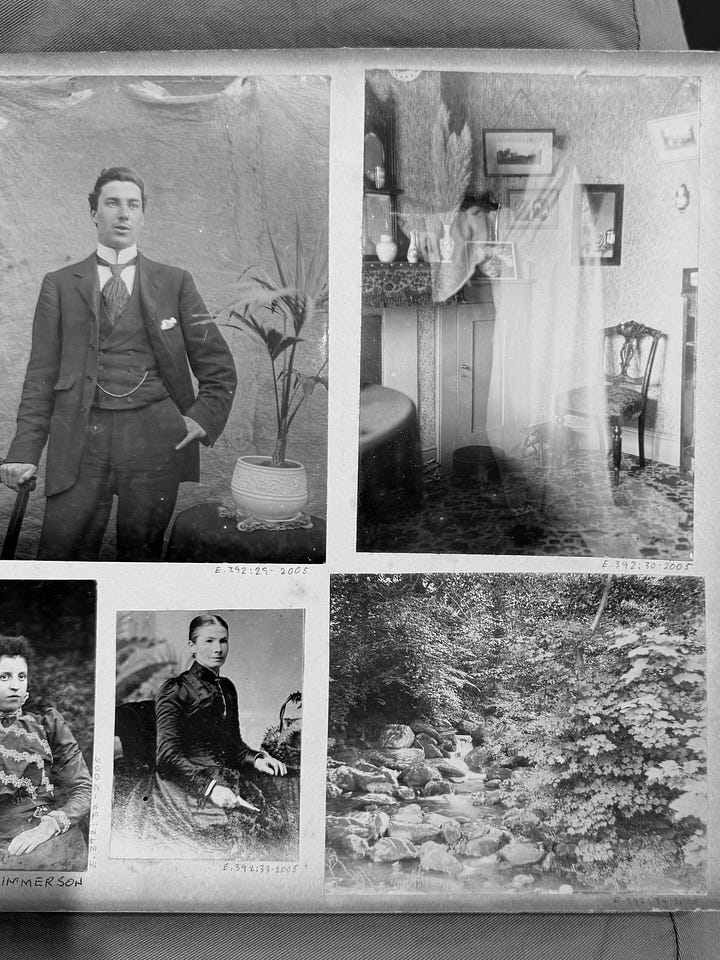

So, the two main ways these “spirit” photographs were created both have to do with the mediums (pun intended) of photography of the time: the Victorian era was the infancy of photography, when wet plate processes were still the norm. This includes the tintype (a positive taken on a tin sheet of metal), the daguerreotype (images on silver-plated copper, either positives or negatives), and the ambrotype (a positive taken on a glass plate). These individual processes all created very fragile images, almost like a thin film over their relevant plate material. But they also worked with long exposure times. Due to the chemicals’ slow adjustment to light, the lenses needed to stay open for up to twenty minutes to properly expose the photograph in question— this leaves a significant margin for user-error. Anybody who wanders into the shot halfway through, will get this uncanny see-through effect, almost like a double exposure. Very ghostly.
And speaking of double exposure, that’s the second way the Victorians got their thrills and their spectres-on-film. Photo manipulation was very much a thing, make no mistake, and intentional double exposure overlays created with two layers of film were sometimes employed to make the incorporeal seem tactile, really there. Some of it is, nevertheless, quite silly, of the “man wearing sheet” variety, but still very enlightening to learn about.
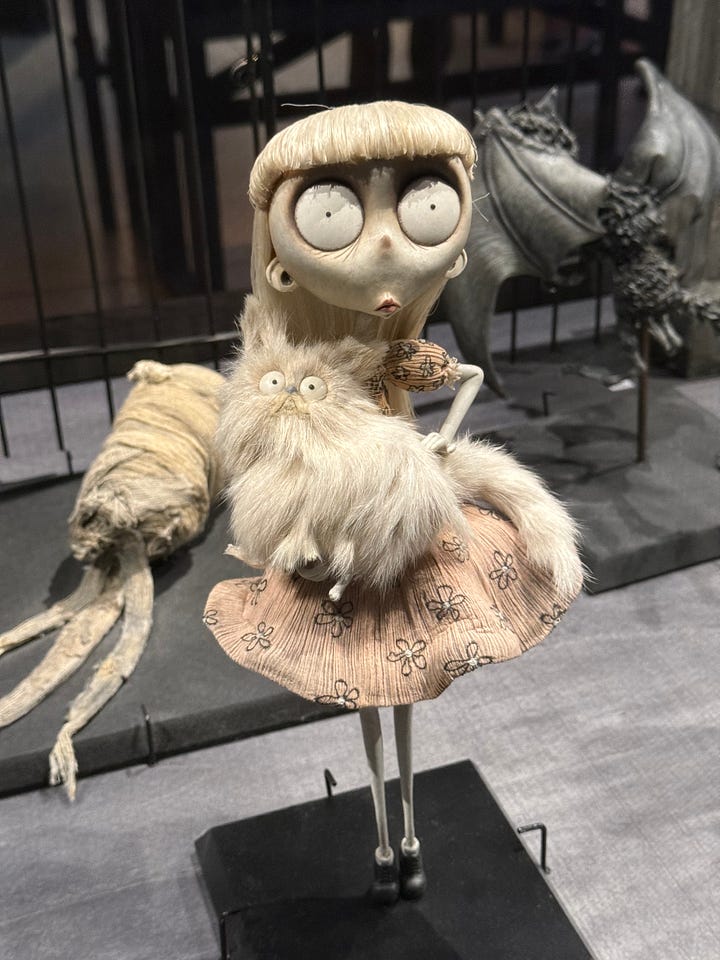
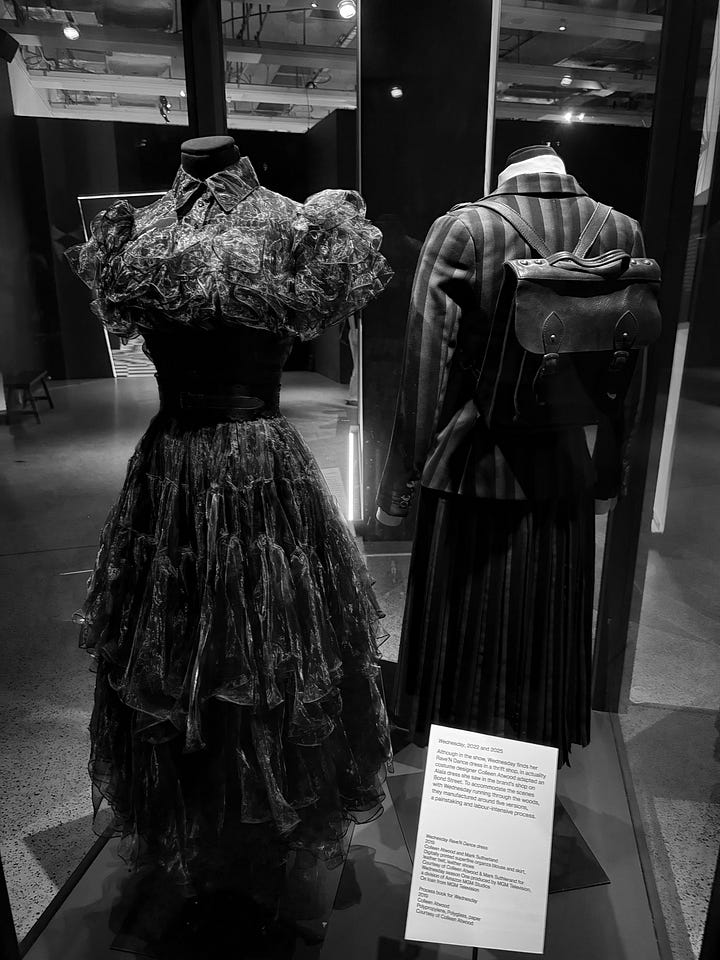
That same day, I also went and checked out “the World of Tim Burton” at the Design Museum right before it closed, walking there using an actual, old-school paper map to guide me. It was a hot, humid day, and the heat is always killing for phone battery, so I ducked into a little tourist shop and inquired about a map. The woman behind the counter, bless her, asked me quite earnestly if I was a tourist doing some sightseeing. Any other day, I would have been mildly offended, considering myself an integrated Londoner to the bone, but I chose to forego the annoyance for the whimsy of navigating the city with a map in hand. No matter if I looked like a tourist, I was having a great time!
Returning to the subject at hand, Burton’s work interests me for many reasons: its odd mix of whimsy and grotesque, the sexual dimorphism4 of his characters, the visual density of a lot of his work— though I confess to having seen very little of his film catalogue. It’s always enjoyable learning about creators who deeply care about the visual dimensions of their work, so seeing the Burtonesque costumes, props, and various stop-motion puppets was quite diverting and inspiring. And it definitely made me want to rewatch “Sleepy Hollow” (1999), which is always a proper win in my book.
And that’s all for the month past, let’s now look at the month ahead, shall we?
✧・゚: *✧・゚:* On the List *:・゚✧*:・゚
Exhibitions, Events, and Talks. As always, there is never a dull moment to be found in the Big Smoke. This June, prepare indulge yourself in an excess of events, like the second instalment of “Our Dear Friends” on June 12th, featuring a great line-up of indie music including folk-rock band “the Slow Country”. RSVP’ing is free. You could also celebrate midsummer with Aether magazine on the 13th, at their very promising midsummer masquerade. Tickets start at £8.50.
Alternatively, you could adventure down to the Viktor Wynd museum on the 2nd for a talk all about the evolution of vampires from ruthless murderer to husband material— the perfect dessert to this newsletter and its philosophy, my dear. Tickets start at £15.
For the museum enjoyers among us, intellectual stimulation takes on a new meaning with “Abstract Erotic: Louise Bourgeois, Eva Hesse, Alice Adams” opening at the Cortauld on the 20th, which promises to be both tittilating and thought-provoking. Or why not go where nobody- or very little- has gone before, and explore the newly opened V&A East Storehouse? This four level cabinet of curiosities, larger than thirty basketball fields, promises to seamlessly blend the discovery of digging through an extensive archive, with the average museum experience. Curious and curiouser.
Film, Music, and TV. Pop girlies rejoice, as Addison Rae is dropping her first, self-titled album on June 6th, promising ample opportunity for dancing. On the other side of the coin, Ethel Cain has recently teased a mystery single for the 4th… So that’s bound to make for one interesting week of streams. If neither are your thing, you might be much more enthusiastic about indie folk singer Avice Caro, dropping her “Home Demos” album on the 27th featuring some personally much anticipated tracks, like “Bird Song”.
Picturehouse is continuing its David Lynch-tribute line-up, screening “Blue Velvet” (1986), and season one of “Twin Peaks” (1990-1991) broken into two-episode chunks, as well as the “lynchspiration” “Rear Window” (1954). But that’s not all there is to sample for Lynch fans, as the Freud Museum is continuing their beloved “Projections” talks on the 5th with “Projections: Lynchian Women”, talking about the psycho-analytic details of Lynch’ women. Tickets start at £10. Additionally, Deeper Into Movies is screening the Australian gothic classic “Picnic at Hanging Rock” (1975) on June 30th— perfect for those who missed its re-release in February. Tickets start at £5.
The BFI never slows down, and neither does their line-up. Beloved erotic and grotesque film “the Piano Teacher” (2001) is set for screenings on the 6th, 7th, 8th, 9th, 10th, 11th, and 12th of June. All-time classic monster movie “Frankenstein” (1931), which I personally can’t recommend enough, will be on on the 2nd and 19th of June, or on the 11th with an introduction. For a more shocking, modern pick, there’s David Cronenberg’s infamous “Videodrome” (1983) on the 19th, 21st, 23rd, and 28th.
In the Stars. First of all, midsummer this year falls on June 24th, so get your strawberries and your maypole ready. For the witches among us (a rather large audience, I reckon) there is also the summer solstice on the 21st: the pagan celebration for the longest day of the year, right before the days start to get progressively shorter again (thank God). On the 11th, there’s a full moon dubbed the “strawberry moon”, coinciding with the time when strawberries are traditionally harvested. There are new moons on the 6th and 25th, and for the Venus lovers among us, there will be a moon/venus conjunction on the 26th, making it the perfect day for rituals of love, beauty, and comfort.
Obsessive Tendencies: What I’ve Loved Lately
Urban Outfitters, “Rhodes” Stitchy Tie-Front Cardigan, [This white crochet cardigan is especially cute when paired with the dress linked below], £32
Essie, nail polish in “Wicked”, [A deep red so dark it’s almost black: perfectly vampiric], £8.99
Waitrose, No.1 Mixed Berry Italian Nougat, [An unexpected pick perhaps, but very sweet nonetheless. My contribution to any future picnics], £3.50
Urban Outfitters - Kimchi Blue, “Isabel” Broderie Midi Dress, [Summer is the perfect time to wear all-white and haunt the narrative, or your neighbourhood] £49
Sony, Cybershot DSC-WX80 digicam, [The perfect compact digicam to echo Bella’s pink one in “New Moon”, 2009, or to feel like a Fatal Frame character], available secondhand ranging £80-200
NBC, “Nosferatu” official replica locket, [This locket is a beautiful replica for everyone who wonders if evil comes from within us, or beyond], $36.98
“I usually solve problems by letting them devour me.”
by Franz Kafka
The dying daydream calls to me once more; at once vaguely sexy, vaguely ominous. Both are needed to survive what will no doubt be another sweltering summer, anguish of my anguish. Flesh of my flesh. I am reminded of Angela Carter’s phrase “I desire, therefore I am” (from “The Infernal Desire Machines of Doctor Hoffman”, 1972). Maybe I am re-brandishing my efforts to live an authentic life, into perpetuity. Pointing my thoughts like a weapon, chipping away at the edges to sharpen them like an arrowhead— the sheer multitude of them overwhelms. Precision and pretence circling one another like an unstoppable force and an immovable object, an issue not yet solved. Like biting into a roasted nectarine, juicy and warm. Perhaps picked too early into its season.
At night, I listen to the musical equivalent of a knife to the heart. I watch for things that will hurt me, because the strength and depth of the feeling proves righteous some perceived wrong within me. I am ill with longing, the paper cuts of desire. The summer, as always, will present itself as a challenge of fortitude. There is no way around it, only through. The only thing left to do is to strap on my boots, and fix my resolve, and venture into the ultraviolent inferno. Instead, let me leave you with scraps of a poem my friend sent to me about Hades & Persephone:
“When Hades decided he loved this girl
he built for her a duplicate of earth,
everything the same, down to the meadow,
but with a bed added.Everything the same, including sunlight,
because it would be hard on a young girl
to go so quickly from bright light to utter darknessGradually, he thought, he'd introduce the night,
first as the shadows of fluttering leaves.
Then moon, then stars. Then no moon, no stars.
Let Persephone get used to it slowly.
In the end, he thought, she'd find it comforting.///
[…] He takes her in his arms.
He wants to say I love you, nothing can hurt youbut he thinks
this is a lie, so he says in the end
you're dead, nothing can hurt you
which seems to him
a more promising beginning, more true.”
by Louise Glück, from “A Myth of Devotion” (collected in “Averno”, 2006)
Until my next letter,
With love (and violence),
x Sabrina Angelina, the White Lily Society
Currently reading: “Drive Your Plow Over the Bones of the Dead” by Olga Tokarczuk // Most recent read: “Secretary” by Mary Gaitskill
White Lily Society links // Sabrina Angelina links
Where the hell have you been, loca? A little worm told me you’re not yet subscribed to this newsletter… but if you’re liking the rain, girl, then you’d do best in making a change. Long story, short: come, join the White Lily Society, and become a martyr of deliciousness.
📼 Song of the (past) month: “Still Blue” - Sunday (1994)
Of course, you can always submit something related to these themes after those dates, but it won’t be grouped in with other themes submissions. You have been warned.
I fear I might be hunted down if I do not mention them in this newsletter, so see Exhibit A: Caroline Forbes & Klaus Mikaelson, from “the Vampire Diaries”. In-universe, Caroline is a vampire, frozen at 17, though roughly 18-19 when they meet, and Klaus is speculated to be turned somewhere between the ages of 20-25, though 1000+ years old when he starts romancing Caroline. In the TVDU’s established lore, vampires are effectively frozen in maturity for the life stage they were turned in (which could certainly explain some of the horrid tempers in the characters). One could also argue that, because the show is fictional, and the actors look comparable enough in age, that it is much easier to disregard the age difference than not— though this does not excuse from in-universe consequences. Especially when involving characters who are minors.
I went back and forth on whether to include Bonnie Bennet in this list, but unfortunately, due to a lot of racism from the writer’s room, I don’t think Bonnie ever gets to exist within the show as more than a plot device. She clearly doesn’t get written with the same softness, or gets many plot lines of a romantic nature, or ones that don’t involve her magic. The early 2010s “vampire girlfriend” trope was, without a doubt, insanely white and heteronormative— but this guide is NOT written from that point of view. There is room for everyone within the aesthetic as it continues to evolve <3




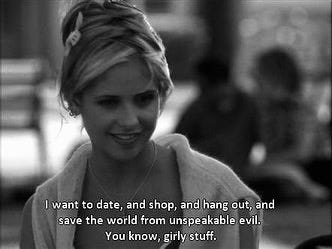







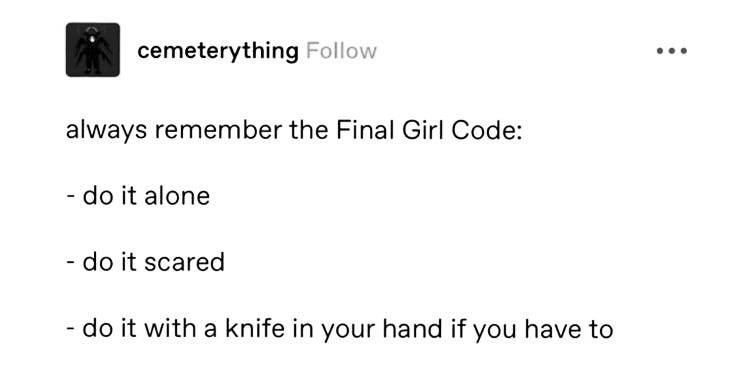
thank you for the honour of quotation, i don’t take it lightly 🖤 a beautiful essay which i will be returning to, soundtracked by sunday 1994
🥀🥀 the essential guide…